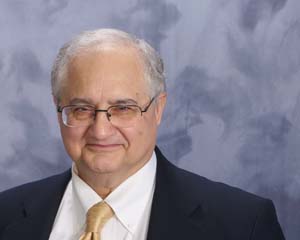Introduction to Distance Education: Telecommunications Systems
By: Dr. Farhad (Fred) Saba, Ph. D.
Founder, Distance-Educator.com
In 1962, a beach ball sized communications satellite called Telstar carried the picture of the then Vice President Lyndon B. Johnson from the east coast of the United States to Europe (Bittner, 1980).
Watch the Documentary on the Launch of Telstar
This simple broadcast heralded the era of commercial satellite broadcasting. Previously, Arthur C. Clark, the British scientist, had demonstrated that if a satellite is placed at 2,300 miles above the equator it would orbit in synch with the earth’s rotation. Later placing geostationary satellites in orbit, such as the Intelsat series, were sponsored by the U. S. based international corporation COMSAT.
These satellites provided continuous signals from a broadcast source to viewers in a vast area of coverage or “footprint,” such as the continental United State. News organizations, commercial broadcasters and educators were among the first beneficiaries of these new telecommunication systems.
Availability of satellites was a boon to educational television in both K-12 and higher education.
By the 1980s numerous telecommunication satellites were in orbit, that were powerful and affordable enough for educators to take advantage of them. No longer would the reach of educational television be limited by the power of one local transmitter. Educators could uplink to telecommunication satellites and broadcast their programs to the continental United States and beyond.
Availability of satellites was a boon to educational television in both K-12 and higher education. Many schools could schedule courses in foreign languages, math and science when they had no qualified teachers, or no strong local demand to retain a full time teacher. Students with particular needs gained access to a variety of programs including advanced college placement courses.
Colleges and universities also reached beyond their immediate geographical locations and provided programs to remote students not only in the U. S. but to students around the world. The satellite also brought universities together to form consortia and cooperate in developing and presenting courses to students. Throughout the 1970s and 1980s with the increase in the availability of telecommunication satellites educational institutions in Alaska, Colorado, Nebraska the Appalachian Mountain region, the Eastern United States and the American Samoa began to experiement with satellite-based instructional television. Some institutions grouped together to develop consortia for offering programs to adult learners beyond their campuses. A good example is the National Technological University (NTU) that started by the association of 28 universities and now includes more than 50 institutions. Originally, NTU was formed to offer engineering courses to corporate employees throughout the country.
The Public Broadcasting Service also extended its activities to bring new learning opportunities to K-12 students as well as to adult learners throughout the country using satellites. Colleges and universities throughout the country used the services of the PBS Adult Learning Services (ALS) that broadcast telecourses via the satellite to more than
1500 participating institutions (Zigerell, 1991). Between 1981 to 1989 courses were presented to 1.3 million students in institutions of higher education particpating in ALS.
Another telecommunication system that grew rapidly in the 1980s was cable television. Originally developed in 1948 simultaneously in Oregon and Pennsylvania (Bittner 1980), cable was to extend the reach of the local TV signals to rural areas, and urban terrain when tall buildings would block the TV signal altogether, or bounce it to create a ghost in the picture.
By the 1980s the coaxial cable used by most cable companies in their trunk lines was augmented by fiber optics that were immensely more conducive to carrying multiple channels. Also, satellites made it possible to import the signals of stations from far away to the head-end of a cable system and offer a rich array of programming to customers. A combination of these “super stations” as well as satellite-based “cable” news and sports stations such as CNN, and ESPN created enough market demand to make cable television ubiquitous in urban and even some rural areas today.
Cable television industry in its inception was regulated by local municipalities, who gave the companies a franchise to operate in their communities. Many local communities demanded and received channels on these systems dedicated to education and public service. Many universities and county offices of education developed close collaborations with their local cable companies to use the dedicated channels for educational cablecasting. Videoconferencing was born in this era, as a unique form of programming in education that allowed students to use the phone to speak to the instructor or a panel of experts in the television studio, ask questions or comment on the subject.
Thus, the combination of communication satellites and cable television rapidly expanded the reach of educational broadcasters nationwide and throughout the world and ushered in the era of interactive distance education.
REFERENCES
Bittner, J. R. (1980). Broadcasting: an introduction. Englewood Cliffs, NJ: Prentice-Hall.
Zigerell, J. (1991). The use of television in American higher education. New York, NY: Praeger.








